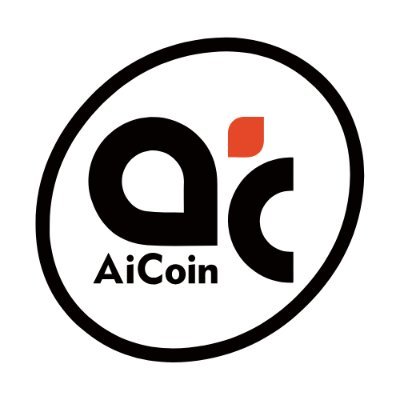


Phaver priceSOCIAL
Phaver (SOCIAL) has been listed in the Innovation, Soicalfi and Web3 Zone,you can quickly sell or buy SOCIAL. Spot Trading Link: SOCIAL/USDT.
SOCIAL to USD converter
How do you feel about Phaver today?
About Phaver (SOCIAL)
What Is Phaver?
Phaver is a Web3 social app designed to provide users with ownership over their social profiles and interactions through Blockchain technology. Launched in May 2022, Phaver leverages decentralized social protocols like Lens and Farcaster, allowing users to engage with content across multiple networks while maintaining full control of their social graph, interactions, and digital identity. Phaver aims to integrate traditional Web2 experiences with the benefits of Web3, such as immutability, digital ownership, and interoperability.
Phaver provides an ecosystem where users can create, share, and discover content while earning rewards through active participation. The platform offers a streamlined onboarding process that enables users to sign up with Web2 logins, allowing for a gradual transition into Web3 features, such as blockchain-based posts, NFT collections, and wallet-to-wallet messaging.
How Phaver Works
Phaver operates as a multi-protocol social network, connecting users across decentralized platforms like Lens Protocol and Farcaster. The app allows users to create profiles, share posts, follow others, and interact with content across different social graphs. Phaver's integration with Lens Protocol means users can own their social interactions, such as posts, followers, and connections, through NFTs. These interactions are stored on-chain, providing users with permanent, immutable records.
Farcaster integration allows users to cross-post between Phaver and Farcaster, creating a decentralized, multi-channel experience. Phaver users can cast posts on Farcaster, mirror content (similar to retweeting), and engage in communities or channels focused on specific interests.
Phaver uses gamification to encourage content creation, curation, and moderation. Users are rewarded with Phaver Points for posting, sharing, and interacting with content. These points can later be redeemed for Phaver Tokens. Additionally, users can stake their points on posts to boost visibility or improve content discovery. The platform also uses decentralized moderation, where users vote on content quality, ensuring that the most valuable and relevant posts are highlighted.
Phaver offers seamless integration with various Web3 assets. For example, users can connect their NFTs, such as Moca IDs (developed by Mocaverse), to their profiles to enhance reputation or unlock exclusive features. The app also supports CyberAccounts, a decentralized digital identity protocol, which adds an additional layer of authenticity and user control.
What Is SOCIAL Token?
SOCIAL is the native token of Phaver. Users earn SOCIAL tokens through participation in the platform by accumulating Phaver Points. The SOCIAL token has multiple utilities within the Phaver ecosystem. Users holding the token can benefit from enhanced credibility (Phaver Cred) scores, which unlock various perks such as increased redemption quotas, VIP support, and preferential access to new features or whitelists. Holding SOCIAL also enables users to buy points that can be used to boost content visibility or avoid in-app payment fees.
For brands and projects, SOCIAL serves as the preferred method of payment for advertising, boosting content, and collaboration features within the app. Brands can acquire SOCIAL tokens to access Phaver’s advertising services, offering boosted post visibility and targeted audience reach.
The SOCIAL token is integral to Phaver’s in-app economy, allowing users to convert points into tokens and use them for various purposes, such as boosting posts or unlocking premium features. The token also facilitates the platform's self-serve advertising model, set to launch in late 2024.
Who Founded Phaver?
Phaver was co-founded by Joonatan Lintala, Tomi Fyrqvist, Carlo Hyvönen, and Tom Hämäläinen, each bringing a wealth of experience from the tech and finance sectors.
-
Joonatan Lintala (CEO) previously led global sales teams at Smartly.io, where he played a pivotal role in expanding the company’s presence in the U.S. and building a global market leader in social media advertising tools.
-
Tomi Fyrqvist (Ecosystem CFO) has a background in finance, with stints at Goldman Sachs and Alibaba. He also led global business development at Daraz, an e-commerce platform owned by Alibaba.
-
Carlo Hyvönen (CTO) brings over 10 years of experience as a senior developer, having worked at Veikkaus, a real money gaming company, where he built recommendation systems and machine learning solutions.
-
Tom Hämäläinen (Head of Analytics) co-founded Coinmotion, Finland’s largest crypto payment service provider, and has extensive experience in full-stack development and smart contracts.
Together, this team has driven Phaver’s growth from a simple idea to a leading platform in the Web3 social space, with more than 550,000 downloads and deep integrations with decentralized protocols like Lens and Farcaster.
Related Articles about Phaver:
Phaver (SOCIAL): User-Centric Social Media in a Web3 World
Phaver price today in USD
Phaver price history (USD)
 Lowest price
Lowest price Highest price
Highest price 
What is the highest price of Phaver?
What is the lowest price of Phaver?
Phaver price prediction
What will the price of SOCIAL be in 2026?
What will the price of SOCIAL be in 2031?
FAQ
What is the current price of Phaver?
What is the 24 hour trading volume of Phaver?
What is the all-time high of Phaver?
Can I buy Phaver on Bitget?
Can I get a steady income from investing in Phaver?
Where can I buy Phaver with the lowest fee?
Phaver news
Phaver updates
Phaver (SOCIAL): User-Centric Social Media in a Web3 World
Bitget Research: Hong Kong’s New Crypto Regulation Comes into Effect, Market Lacks Upward Momentum
Bitget Research: Macro Uncertainty Leads to Market Downturn, BTC Tests $26,000 Support Level
Bitget Research: Exchange Rate Between ETH and BTC Surges 3% in a Single Day, Altcoins Experience a General Rally
Bitget Research: zkSync Era Mainnet Officially Launched, Continues Enthusiasm for Layer2 Blockchain Interaction
Bitget Research: FOMC Meeting Releases Hawkish Statements, Market Pulls Back and Awaits $ARB Launch
Lens Protocol - A Decentralized Web3 Social Graph and Web2 Social Media Disruptor
Phaver holdings by concentration
Phaver addresses by time held

Global Phaver prices
- 1
- 2
- 3
- 4
- 5
How to buy Phaver(SOCIAL)

Create Your Free Bitget Account

Verify Your Account

Convert Phaver to SOCIAL
Trade SOCIAL perpetual futures
After having successfully signed up on Bitget and purchased USDT or SOCIAL tokens, you can start trading derivatives, including SOCIAL futures and margin trading to increase your income.
The current price of SOCIAL is $0.0001969, with a 24h price change of -10.45%. Traders can profit by either going long or short onSOCIAL futures.
Join SOCIAL copy trading by following elite traders.
New listings on Bitget
Buy more
Where can I buy Phaver (SOCIAL)?
Video section — quick verification, quick trading

SOCIAL to USD converter
SOCIAL resources
Phaver ratings
Bitget Insights





Related assets
Additional info on Phaver
Coin overview
Coin-related
Trade-related
Coin updates
























.png)








